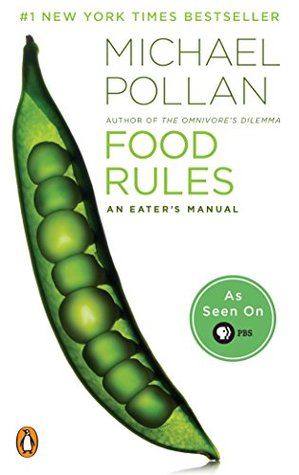More on this book
Community
Kindle Notes & Highlights
Nutrition science, which after all only got started less than two hundred years ago, is today approximately where surgery was in the year 1650—very promising, and very interesting to watch, but are you ready to let them operate on you? I think I’ll wait awhile.
FACT 1. Populations that eat a so-called Western diet—generally defined as a diet consisting of lots of processed foods and meat, lots of added fat and sugar, lots of refined grains, lots of everything except vegetables, fruits, and whole grains—invariably suffer from high rates of the so-called Western diseases: obesity, type 2 diabetes, cardiovascular disease, and cancer. Virtually all of the obesity and type 2 diabetes, 80 percent of the cardiovascular disease, and more than a third of all cancers can be linked to this diet. Four of the top ten killers in America are chronic diseases linked
...more
FACT 2. Populations eating a remarkably wide range of traditional diets generally don’t suffer from these chronic diseases.
What an extraordinary achievement for a civilization: to have developed the one diet that reliably makes its people sick!
Eat food. Not too much. Mostly plants.
Human beings ate well and kept themselves healthy for millennia before nutritional science came along to tell us how to do it; it is entirely possible to eat healthily without knowing what an antioxidant is.
avoid heavily processed foods—which I prefer to call “edible foodlike substances.”
1 Eat food.
highly processed concoctions designed by food scientists, consisting mostly of ingredients derived from corn and soy that no normal person keeps in the pantry, and they contain chemical additives with which the human body has not been long acquainted.
2 Don’t eat anything your great-grandmother wouldn’t recognize as food.
3 Avoid food products containing ingredients that no ordinary human would keep in the pantry.
4 Avoid food products that contain high-fructose corn syrup.
Not because high-fructose corn syrup (HFCS) is any worse for you than sugar, but because it is, like many of the other unfamiliar ingredients in packaged foods, a reliable marker for a food product that has been highly processed.
But don’t fall for the food industry’s latest scam: products reformulated to contain “no HFCS” or “real cane sugar.” These claims imply these foods are somehow healthier, but they’re not. Sugar is sugar.
5 Avoid foods that have some form of sugar (or sweetener) listed among the top three ingredients.
6 Avoid food products that contain more than five ingredients.
7 Avoid food products containing ingredients that a third-grader cannot pronounce.
8 Avoid food products that make health claims.
For a product to carry a health claim on its package, it must first have a package, so right off the bat it’s more likely to be a processed rather than a whole food.
Don’t take the silence of the yams as a sign they have nothing valuable to say about your health.
9 Avoid food products with the wordoid “lite” or the terms “low-fat” or “nonfat” in their names.
10 Avoid foods that are pretending to be something they are not.


